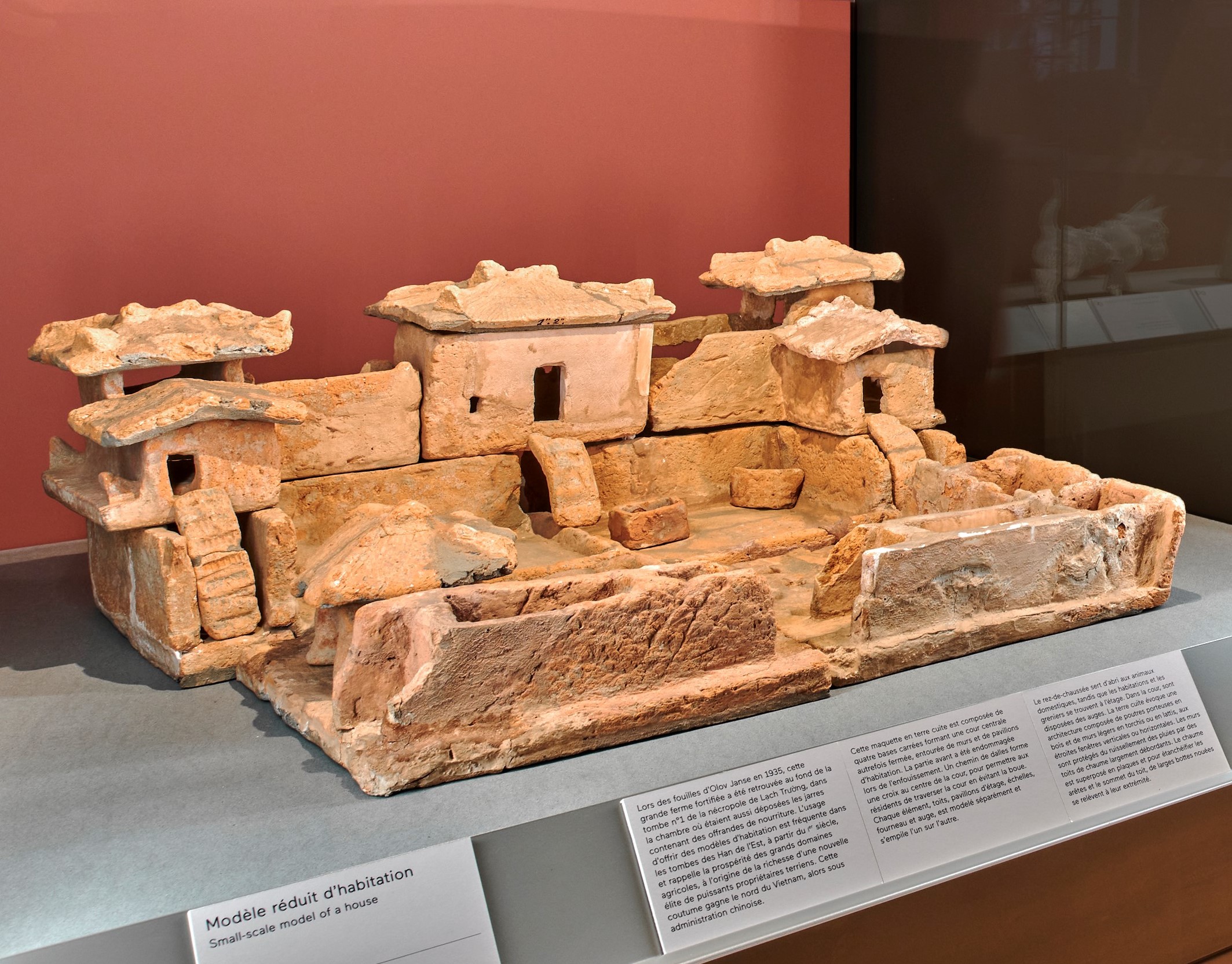
Modèle réduit d'habitation
Terre cuite
Maquette
Don fouilles : Janse, Robert Ture Olov
M.C. 11232-A
The Cernuschi Museum has several models of houses from tombs excavated by Olov Janse in the 1930s. This type of object was an offering to the deceased person, according to a custom dating back to China in the Later Han period. This tradition was related both to the belief that the corporeal po 魄 soul stayed with the body of the deceased person in the tomb, and therefore had to be entertained by the symbolic spectacle of these miniature buildings and figurines, and to the development of extensive land estates that functioned almost self-sufficiently, around which local life was organised increasingly independently of the central power of the Han, which was in a state of inertia.
The offering of model dwellings to deceased persons of high social rank was taken up in Vietnam. However, the models are different from those found in China, being made up of different and independent elements. This model is composed of four square bases (the two others are not shown in the photograph) featuring low parallel walls. The upper pavilions are simply laid upon the low walls, and the roofs rested on the pavilion walls. A ladder provided access to the upper pavilions. Various domestic equipment occupied the central courtyard: a covered lean-to, a manger, a trough. The roofs were made of bundles of rushes and not tiles as in Chinese model houses. The door and window openings are narrow and the doorways raised.
The quality of the clay used was in between that of the two types of ceramic vessels found in the tombs of the time. It is rougher than the pale pink clay of the delicate small- and medium-sized ceramics, but finer than that of the large jars with stamped or incised geometric decorations. Numerous small grains of quartz are mixed into the clay in most of the pieces. The colours of the ceramic range from an almost brick-like orangey red to various light greyish shades. These models have no trace of glazing, contrary to the Chinese tradition.